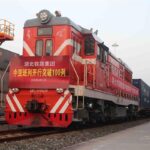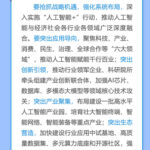The Wuhan Hundred-Mile Yangtze River Ecological Corridor was fully completed for the first time during this Golden Week.
Schematic diagram of the Wuhan Hundred-Mile Yangtze River Ecological Corridor.
On October 5th, with clear weather, Wuhan was bustling with crowds. The Yellow Crane Tower was packed with visitors, Jianghan Road was shoulder-to-shoulder with people, and East Lake echoed with cheerful laughter.
If we pull the camera higher, above the bustling crowds, a grander picture unfolds along the two rivers and four banks—the Hundred-Mile Yangtze River Ecological Corridor has been fully connected, welcoming visitors from all directions in its complete form for the first time.
From an aerial view, this 82.89-kilometer ecological corridor resembles a century-long scroll unfolding along the river. The tranquility of Nanzuizui, the liveliness of Hankou River Beach, the vitality of Yangsigang, the richness of Wuchang Bay, the rustic charm of Hongshan River Beach… during this Golden Week, each section of the river beach tells visitors different stories.
Beginning: From River Defense to Fulfilling the “River Connection” Dream
“Enjoying the river breeze and scenery while tasting authentic Wuhan cuisine—this is the perfect place to relax!” On the evening of October 3rd, at Yongqing Gate of Hankou River Beach, Ms. Li from Changsha exclaimed on the viewing platform. Behind her, the Yangtze River Second Bridge and the skyscrapers on the opposite bank were silhouetted against the sunset, with tourists bustling about.
This is the starting point of Wuhan’s Hundred-Mile Yangtze River Ecological Corridor, and where Wuhan residents’ “river beach dream” began.
From the management of the Dragon King Temple dangerous section after the 1998特大洪水, to the opening of the first phase of Hankou River Beach in 2002 that sparked a city-wide trend of “going to the riverbank to play,” to the launch of the Wuhan Hundred-Mile Yangtze River Ecological Corridor project in 2020, Wuhan has spent nearly 30 years completing a profound transformation from “flood control barrier” to “world-class waterfront space.”
During this Golden Week, Hankou River Beach served as a hospitable “urban living room,” demonstrating perfect integration between waterfront space and urban functions with its mature, convenient services and rich living atmosphere. Through art exhibitions, opera carnivals, and open-air cinemas, it warmly embraced every visitor, telling the story of Wuhan’s journey from “defending the river” to “connecting with the river.”
Transition: Contemporary Transformation of Industrial Heritage
Following the river downstream, the brushstrokes of this scroll shift from urban integration to the vibrant renewal of industrial heritage. Hanyang’s Yangsigang River Beach, once a noisy old dock with roaring machinery, has now transformed into a “urban runway” for sports and leisure. Beneath the massive gantry cranes, the sound of basketballs hitting the ground resonates powerfully. “Playing basketball with the river breeze is truly delightful!” During the National Day holiday, Mr. Zhang reunited with old classmates here, sweating it out as if returning to their student days.
What was once a somewhat desolate industrial site just a few years ago has now transformed into an artistic sports paradise. Beneath the golden Yangsigang Bridge, visitors marvel at the spectacle of the “curtain-like rain screen”; at the foot of the bridge, the Zhiyin Culture Market, with the aroma of coffee blending with the river breeze, injects new life into the old industrial area.
Coloring: The Base Tone of Rustic Charm and Authenticity
As the ink continues to spread, Hongshan River Beach and Qingshan River Beach insist on preserving a touch of original rustic charm and authenticity for this long scroll.
As part of the central urban area’s river beach construction, Hongshan River Beach doesn’t pursue精致华丽; instead, with farmland enclosed by carbonized wooden fences and tranquil spaces where metasequoia shadows reflect autumn, it leaves urban dwellers with a precious memory of countryside.
“Here, you can both watch the mighty river flow and find the tranquility of the countryside.” Mr. Liu’s words highlight the value of this place. Together with the connected Qingshan River Beach, they form a complete slow-traffic corridor, allowing citizens to experience the Yangtze River from different perspectives. Whether it’s the reed sea plank bridge at Hongshan River Beach or the renowned “sponge” ecological concept at Qingshan River Beach, they all enrich the corridor’s ecological diversity, showcasing the unadorned





